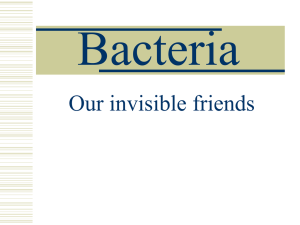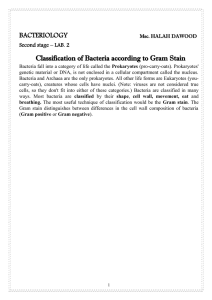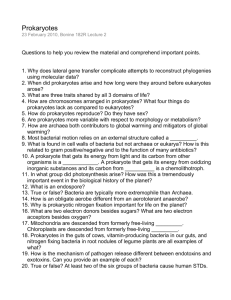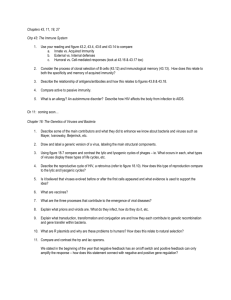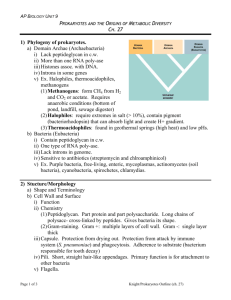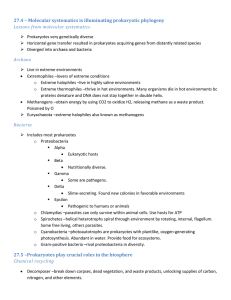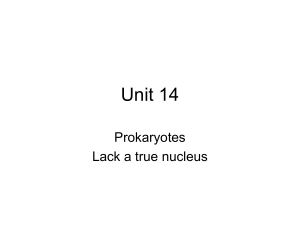Chapter 27 - Iowa State University
advertisement
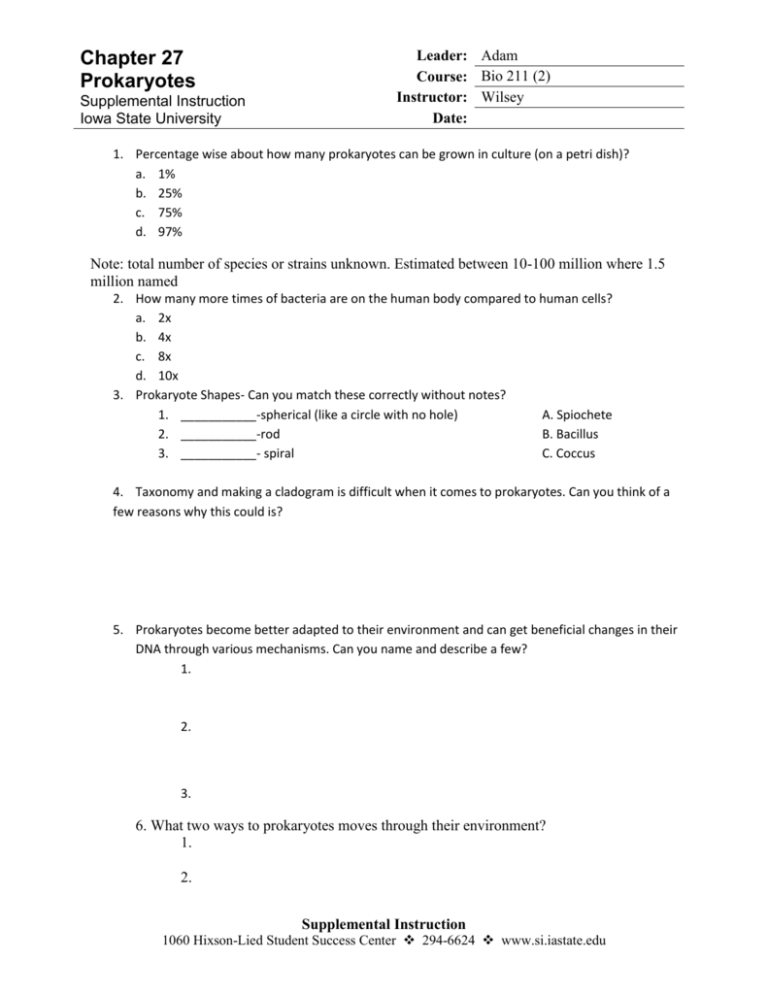
Chapter 27 Prokaryotes Supplemental Instruction Iowa State University Leader: Adam Course: Bio 211 (2) Instructor: Wilsey Date: 1. Percentage wise about how many prokaryotes can be grown in culture (on a petri dish)? a. 1% b. 25% c. 75% d. 97% Note: total number of species or strains unknown. Estimated between 10-100 million where 1.5 million named 2. How many more times of bacteria are on the human body compared to human cells? a. 2x b. 4x c. 8x d. 10x 3. Prokaryote Shapes- Can you match these correctly without notes? 1. ___________-spherical (like a circle with no hole) A. Spiochete 2. ___________-rod B. Bacillus 3. ___________- spiral C. Coccus 4. Taxonomy and making a cladogram is difficult when it comes to prokaryotes. Can you think of a few reasons why this could is? 5. Prokaryotes become better adapted to their environment and can get beneficial changes in their DNA through various mechanisms. Can you name and describe a few? 1. 2. 3. 6. What two ways to prokaryotes moves through their environment? 1. 2. Supplemental Instruction 1060 Hixson-Lied Student Success Center 294-6624 www.si.iastate.edu 7. What is a biofilm of bacteria? 8. Polysaccharides that make bacteria stick together in a biofilm is called what? Prokaryote Respiration 9. Prokayotes can live in environment with oxygen or without oxygen. What are these types of environments called and list the chemical equation for both. 10. How about when they are poisoned by oxygen, what is this called? 11. If a bacteria can grow in both aerobic or anerobic environments. This is called what? Prokaryote Nutrition Match the following 1. _________- photosynthesizes (uses CO2 as Carbon source) 2. _________-gains energy by absorbing or consuming something else Fill in the boxes A. Autotroph B. Heterotroph Domain Archaea 1. What is the most distinctive trait of Archea? 2. 3 Subgroups of Archea include a. b. c. Domain Bacteria 3. List some description of this Domain 4. All Bacteria have peptidogylcan cell walls. But a majority are Gram positive and some are Gram negative. What does this mean? 4. Bacteria are important in 5 ways which we covered in class. List each here: i. ii. iii. iv. 5. Match the following clades with their proper description 1. _________- fix nitrogen, can be pathogenic, mitochondria are from this group 2. _________- obligate parasites 3. _________- Very long cells in spiral shape, can be pathogenic 4. _________- both anerobes and aerobes, mostly chemoheterotrophs 5. _________- Photautotrophs, single cells or colonial A. Spirochetes E. Cyanobacteria 6. What is an endospore? B. Chlamydias C. Proteobacteria D. Gram +

